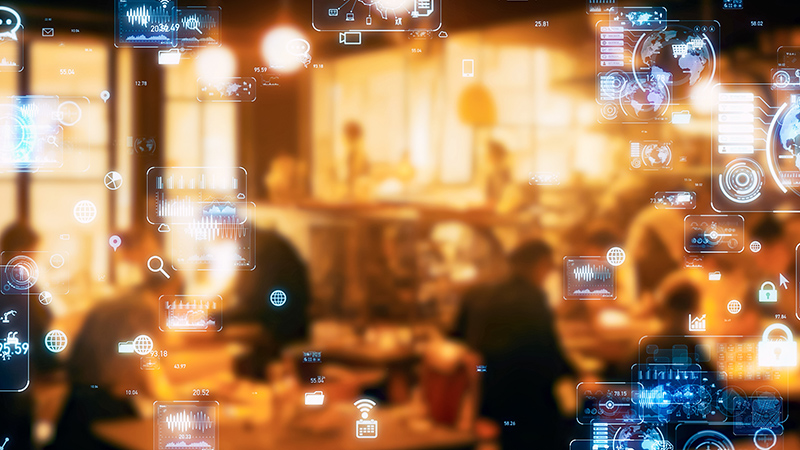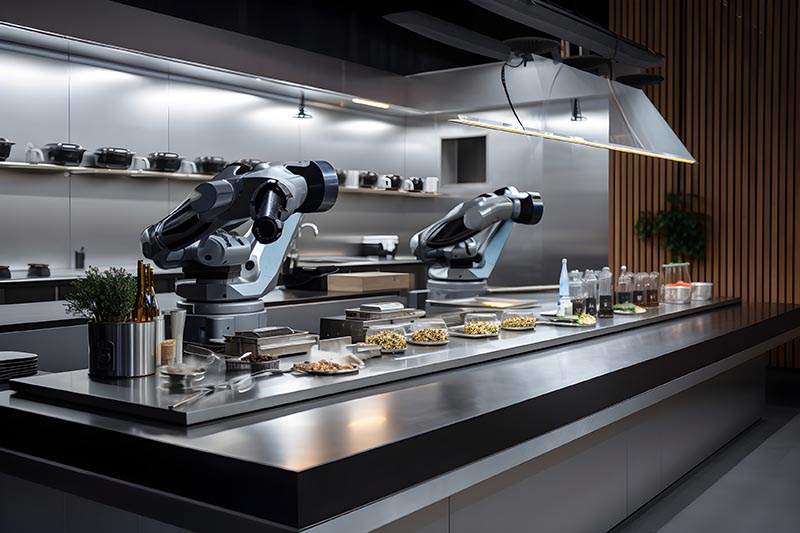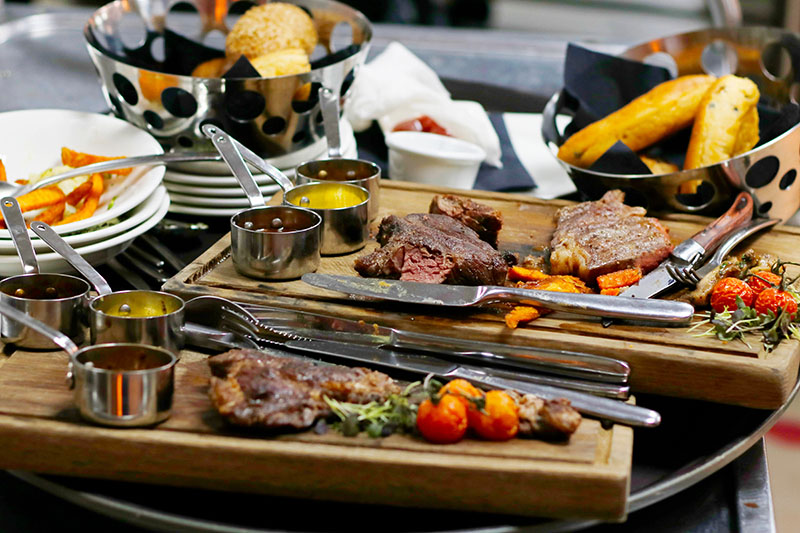
AI & Restaurant Personalization: Experience Enhancer or Privacy Nightmare?
The AI Diner’s Dilemma: Navigating Personalized Restaurant Experiences
The dining experience has evolved and been cultivated over the years into one we love. But things are changing. The future of dining lies in the use of AI. While many are excited about the integration of AI in restaurants, others feel it may create a complicated dilemma for all parties. How? It could potentially chase away many people who are concerned with data privacy.
According to a study on ResearchGate, personalization for guests and customers has always been an important aspect of the food industry. By using AI in restaurants, the business can potentially boost revenue while continuing to maintain customer loyalty. However, newer technology can lack a human connection, which may affect a customer’s overall dining experience.
Other customers are more concerned with their information being used in the restaurant, even if it is used to make the dining experience more unique. As AI in the restaurant industry requires the use of personal details, this will be a massive hurdle to overcome for those who want to understand how their information is being used.
How AI Works: Making Your Restaurant Visit Special
As AI and associated technologies are being integrated into different industries, restaurant owners can apply these advancements to make restaurant trips even more special. According to a study by Oracle, multiple uses of AI technology may help to create a better overall restaurant experience for restaurant owners and diners:
- Micro/macro factors from order statistics: AI can help create an optimized menu catered to the customer’s preferences. This can also give restaurant owners insightful data about what’s working (and what isn’t) on their menu.
- A voice activation system inside the restaurant. This could look like a prompt or command from a customer to change certain atmospheric settings around their table, such as dimming lights or lowering the music volume around them. The consumer can simply prompt AI to adjust these settings.
- Virtual reality technology for atmosphere: Restaurants can use VR technology to create an immersive environment for diners. For example, diners can wear VR glasses that can “transport” them to an exotic location while eating their meal.
- Using drones for food delivery: Drones for food delivery services are becoming more popular for restaurants as they’re generally less costly and more reliable than physical drivers. Drones are also friendlier towards the environment.
- Using a robot to prepare food: The food quality will be consistent, and the chefs will be free to focus on more specific tasks in the kitchen. AI can also help limit the amount of time dedicated to administrative work, which can help alleviate some of the kitchen staff’s workload.

The Good Side of AI: How AI Makes Dining More Enjoyable
Using AI in the dining room can significantly improve restaurant operations and enhance the way we dine, including:
- Minimal wait time
- Streamlined table layout and organization
- Increased marketing visibility to improve the restaurant’s reputation, resulting in more consumers visiting the restaurant
- Menu improvement based on more accessible consumer feedback and information on the location and cultural atmosphere of the area
- A personalized and unique dining experience
Privacy Concerns: Are We Sharing Too Much?
Nowadays, it’s common for massive corporations to use and sell information for convenience. Systems such as Alexa, Siri and Google’s Smart Assistant can be incredibly helpful in our daily lives, but it comes at the cost of these systems learning our personal information.
It is why you get targeted adverts on social media or curated music suggestions. AI has become so good at specific product or service recommendations because it actively learns and builds a “digital profile” of you in a company’s server room that can be used to make tailored suggestions based on your previous searches.
68% of consumers do find suggestions based on their digital footprint to be invasive based on these results from Oracle.com. This means using AI to learn private information about what clients or customers want to eat by using their social media accounts may turn away or alienate many people from restaurants.
According to a publication done by ResearchGate, gathering personal data is easy for many companies due to our society’s dependence on technology, which, unsurprisingly, results in large privacy concerns.

Rules for AI: What Restaurants Need to Follow
Consent law is an important regulation that restaurants need to follow when it comes to AI. Many people will not want AI in the restaurant to base suggestions of what to have based on their social media accounts or previous interactions. A known issue with AI and technologies that use personal information is that it can easily be hacked or even sold to other companies. They then potentially use your information for other purposes, such as targeted ads. Think of how your Facebook adverts always seem to cater to your likes and recent searches.
So unless the customer understands and agrees to have AI and the restaurant use their personal information, AI should not be allowed to gather private information. Restaurants can address this issue by following what websites are doing: creating a privacy policy. Before ordering meals, diners need to be given the option to agree to a privacy policy that outlines why, how, when and where their personal data is being used.
It goes without saying that the human touch is important when it comes to food. AI in the restaurant area needs to be a tool to help the staff and not a replacement. While a big advantage of AI is having more insightful menu data, it’s essential to ensure that chefs use the statistics on what customers love as a means of improving their skills and proactively evolving the menu rather than just seeing their customers as numbers on a board.
Can We Trust AI? Making Customers Feel Safe
Many people still do not trust AI and may not like the idea of entirely removing the human factor when it comes to dining. That is why it is important that the use of AI in restaurants is monitored to make sure consumers feel safe with its use. One of the biggest reasons why people feel wary about AI is reliability and the data privacy risks. Restaurants can help make their customers feel safer by considering the following of their AI: Performance, process and purpose.
According to Re-Work, how customers trust your AI will depend on the outcome. For example, low-risk outcomes are more likely to be accepted. For restaurants to help make their customers feel safe, they need to be able to explain their AI, its purpose and its outcome. Most often, people fear what they don’t know. A study on building trust in AI found that the best way to do this is by being transparent and ready to easily explain the purpose and how the AI is being used.
Finding the Right Balance: AI and Privacy in the Future
Since the beginning of the restaurant industry, businesses have always been striving to provide dinners with personalized experiences, and now, with the latest technologies, restaurants can do this while making dining more accessible and enjoyable.
Finding the balance between protecting privacy and using AI for restaurants will always be a hot topic. As beneficial as technology and AI is, there are still a variety of unknowns. In the interim, restaurant owners will continue to make sure that if AI is used in their business, it’ll be an experience enhancer and not a privacy nightmare.

 blog
blog



